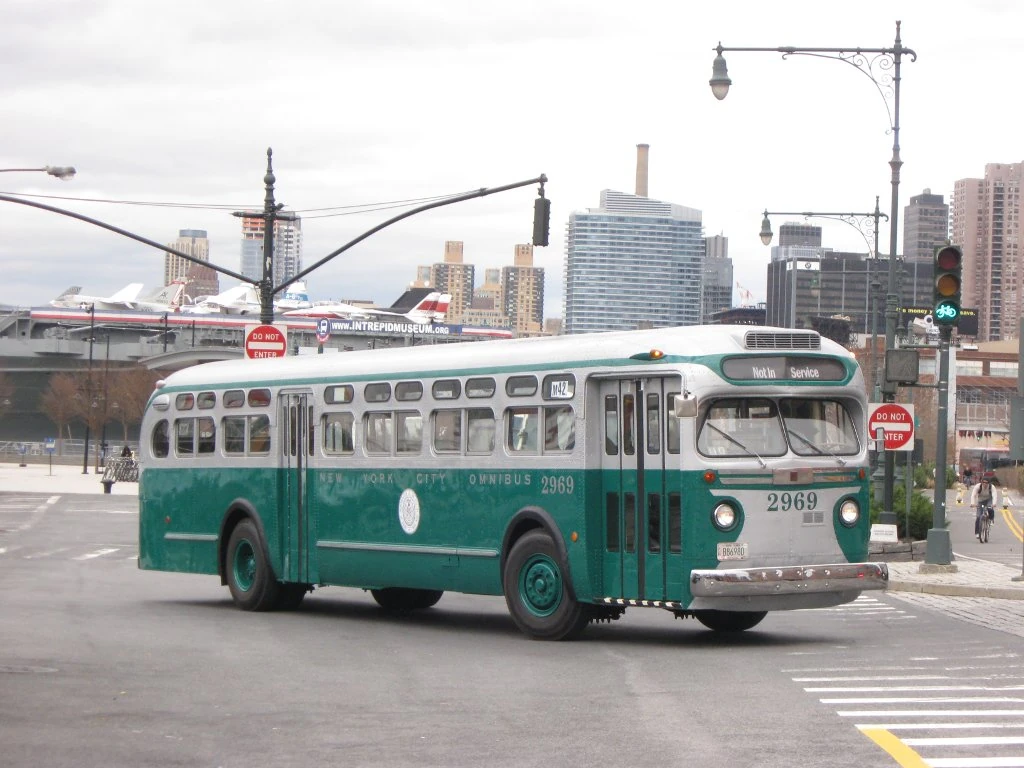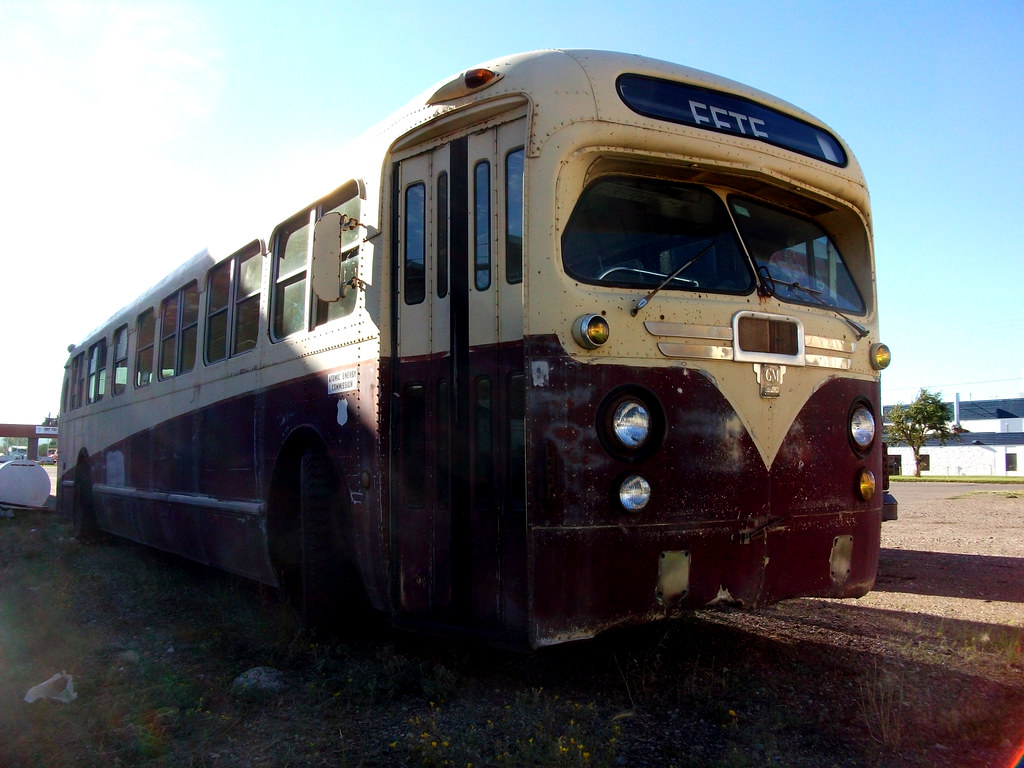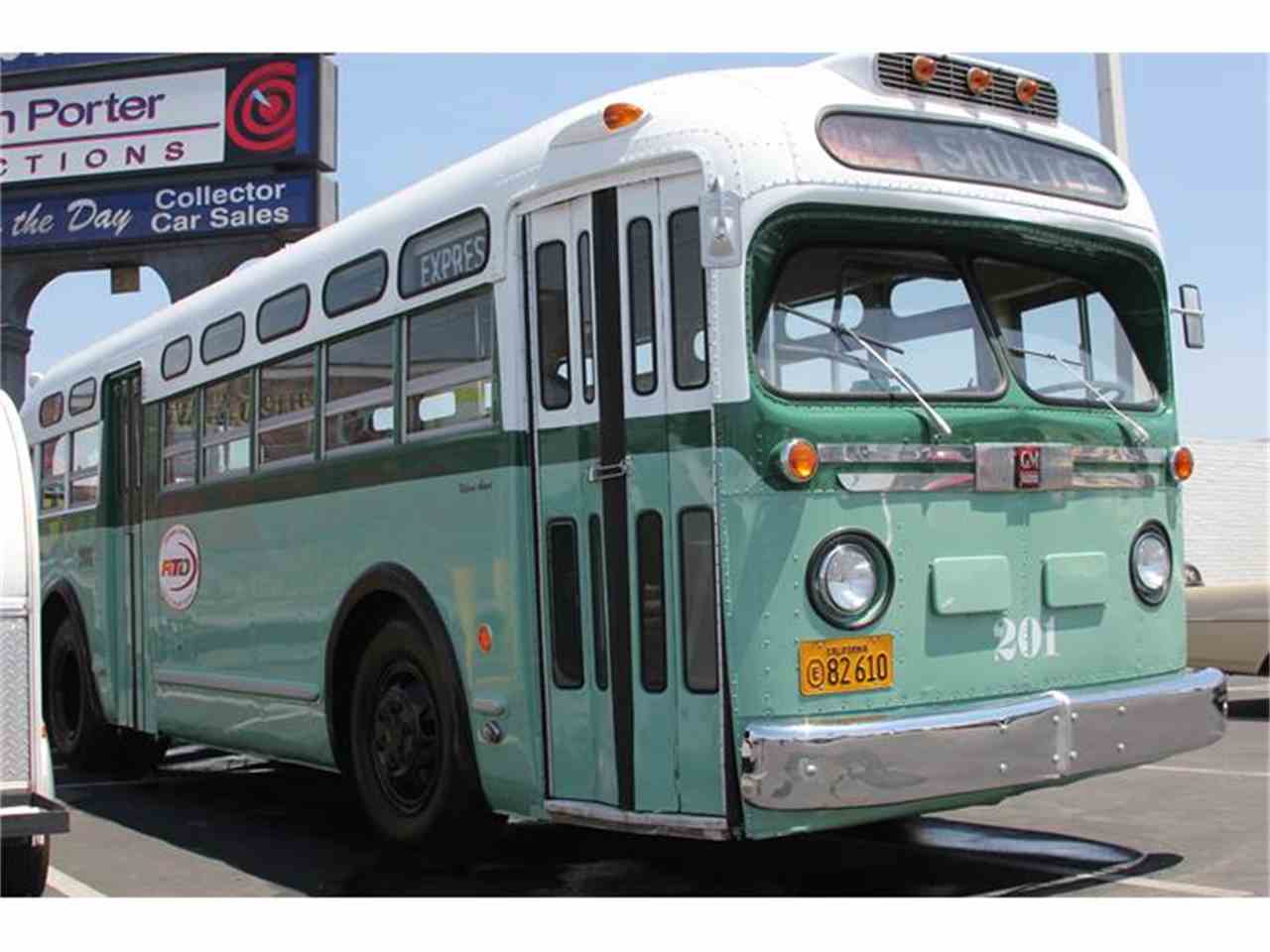
GM "oldlook" transit bus Tractor & Construction Plant Wiki FANDOM
The GM "old-look" transit bus was a transit bus that was introduced in 1940 by Yellow Coach beginning with the production of the model TG-3201 bus. Yellow Coach was an early bus builder that was partially owned by General Motors before being purchased outright in 1943 and folded into the GM Truck Division to form the GM Truck & Coach Division. The Yellow Coach badge gave way to the GM.

gmcoachpd4901red
The GM New Look bus is a municipal transit bus that was introduced in 1959 by the Truck and Coach Division of General Motors to replace the company's previous coach, retroactively known as the GM "old-look" transit bus. Also commonly known by the nickname "Fishbowl" , it was produced until 1977 in the US, and until 1985 in Canada. More than 44,000 New Look buses were built.

Pin by Delray415 on GM OLD LOOK Olds, Vehicles, Bus
We figure that the least you need to know is that the transition to urban buses gave birth to the GM Old Look bus, one of the General's most significant vehicles. The Old Look coaches date to 1939, nearly 15 years after Alfred Sloan established The Omnibus Corporation as a GM subsidiary and put John Hertz, of auto rental and, later, Yellow Coach fame, in charge.

old look gmc transit bus
A GM "old look" 5101 coach, built on a 4509 chassis. The GM "old-look" transit bus is a transit bus that was introduced in 1940 by Yellow Coach beginning with the production of the model TG-3201 bus. Yellow Coach was an early bus builder that was partially owned by General Motors (GM) before being purchased outright in 1943 and folded into the.

GM "Old Look" Bus Neat old GM bus with US Atomic Energy Co… Flickr
A restored GM "New Look" bus of the former New York Bus Service (now the MTA). The GM New Look bus is a municipal transit bus that was introduced in 1959 by the Truck and Coach Division of General Motors to replace the company's previous coach, retroactively known as the GM "old-look" transit bus.. Also commonly known by the nickname "Fishbowl" (for its original six-piece rounded windshield.

Vintage gm bus 4104 project day 1 Detroit Diesel 671 YouTube
TTC GM "Old Look" bus #1966 pulls through Runnymede loop, westbound in service on 30 LAMBTON in this July 1970 shot. The photographer is unknown and the image is from the John Knight collection, donated by Pete Coulman.

Atlanta Transit GM Old Look Bus 238 a photo on Flickriver
Beginning in 1940, that which is now called the "Old-Look" style of bus were crafted by Yellow Coach, until GM bought up the works in 1943. GM continued production of the monocoque-structured loaf-of-sandwich-bread with a choice of diesel or gasoline (in some cases, even an electric) propulsion engine, and these buses were a staple of.

1959 GM Old Look Bus Vintage buses Pinterest Bus camper, Bus
The GMC "Old Look" bus was first made in 1940, and was phased out when the "New Look" buses arrived in 1959. They utterly dominated the bus market with their advanced features and superb ruggedness, and rightly earned them a Greatest Hits designation.. Many of my country fellows agree that the GM Old Look buses have been the most.

GMC Old Look Transit Bus for more info on this bus see GMC… Flickr
The two buses were so different that the new models were marketed as "New Looks", and the older models obtained the "Old Look" monicker as a retronym. The release of the GM's "New Looks" was well timed, as it coincided with the reduction and elimination of a number of streetcar networks across North America, and a significant rise in transit bus use.

Nostalgia! Sound recording of GM "Old Look" (TDH5106) 3100 on a W
The Old Look was a transit bus sold in Canada and the United States. It was introduced in 1940 by Yellow Coach, a bus manufacturer that was partially owned by General Motors Corporation (GM). It was purchased outright in 1943 and was combined with the GM Truck Division to form the GM Truck & Coach Division.Buses continued to be badged as Yellow Coach until 1944.

MTA New York City Bus Vintage Special 1956 GM "Old Look" TDH5106 on
Muni had not a single GM Old Look. There wasn't a GM bus to be seen until Fishbowls, along with a token group of Flxibles, came in the late 1960s. Flxible then got the contract to replace the M-Hs, Fageols and Louies. Today, San Francisco maintains electric traction. Its trolley bus operation has actually expanded to more route-miles than.

"Old Look" GMC diesel bus operating on Rt.E PHILADELPHIA 1950S Bus
(first posted 4/30/2016) The GM Old Look Coach - a true classic in every sense. Most CC readers know that the Old Look was produced largely from 1940 until the introduction of GM's New Look or "Fishbowl" model in 1959. But what is less known is that a smaller model of the Old Look would remain in production in tandem with the New Look for another 10 years.

Transit Toronto Image TTC 1966
TTC General Motors TDH-3610 "Old Look" bus #985 operates westbound on Commissioners Street, in service on the 3 ASHBRIDGE route. This photo was taken by Anthony Holt and comes courtesy of the Pete Coulman collection. TTC GM TDH-3610 "Old Look" bus #989 poses at Sherbourne Garage, bearing a 3 ASHBRIDGE rollsign in this September 1965 shot by.

GM TDH5301 “old look” transit bus Transporte, Camiones y Autos
Media in category "GM Old Look buses". The following 44 files are in this category, out of 44 total. 0170 Hershey - Antique Automobile Club of America Museum - Bus Museum - Flickr - KlausNahr.jpg 3,072 × 2,304; 3.07 MB. 1954 Twin City Rapid Transit bus 1303 on display 2011.jpg 2,847 × 1,828; 1.5 MB. 19670603 01 Chicago Transit Authority UMC.

1948 GMC Bus for Sale CC885311
Built between 1940 and 1969, these "Old-Look" buses continued in service way beyond their freshness date. Smelly, slow, dirty, hot in summer/cold in winter, loud, uncomfortable, and rough riding, these were transportation for the masses. At least the ones in my hometown, back in the day, were inexpensive to ride.

1948 GMC Bus for Sale CC885311
1. The information was obtained from a GM production listing. 2. The transit system or company listed as the purchaser is who GM had recorded. There were many times third parties involved in the acquisition especially for small transit companies so a coach that ran for your system may be listed under a third party. 3.